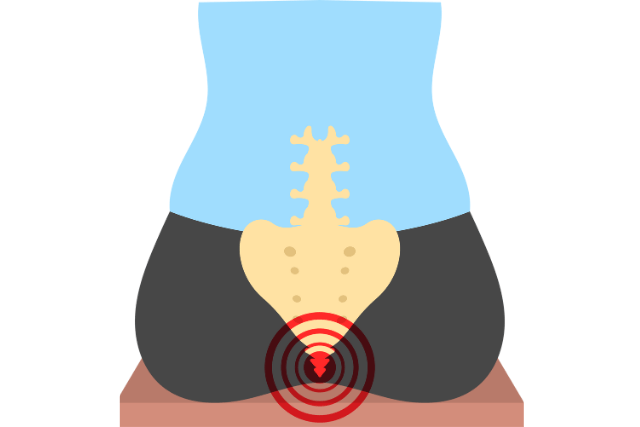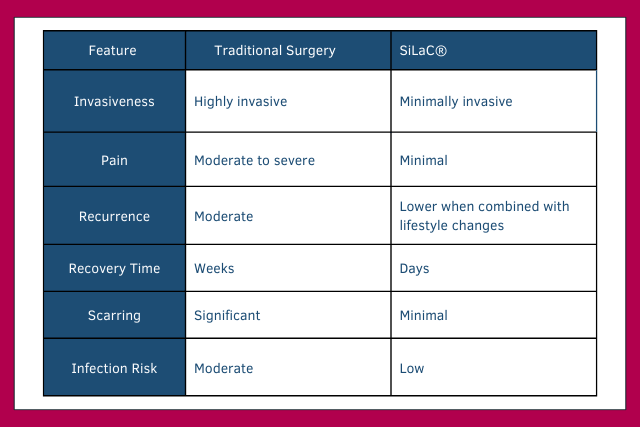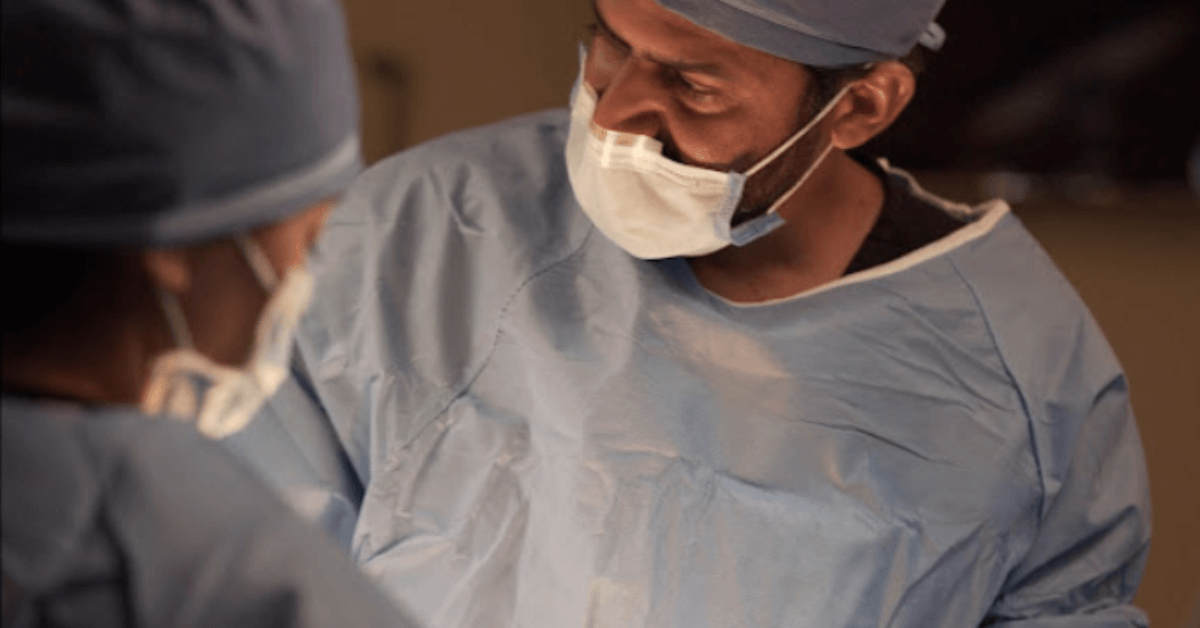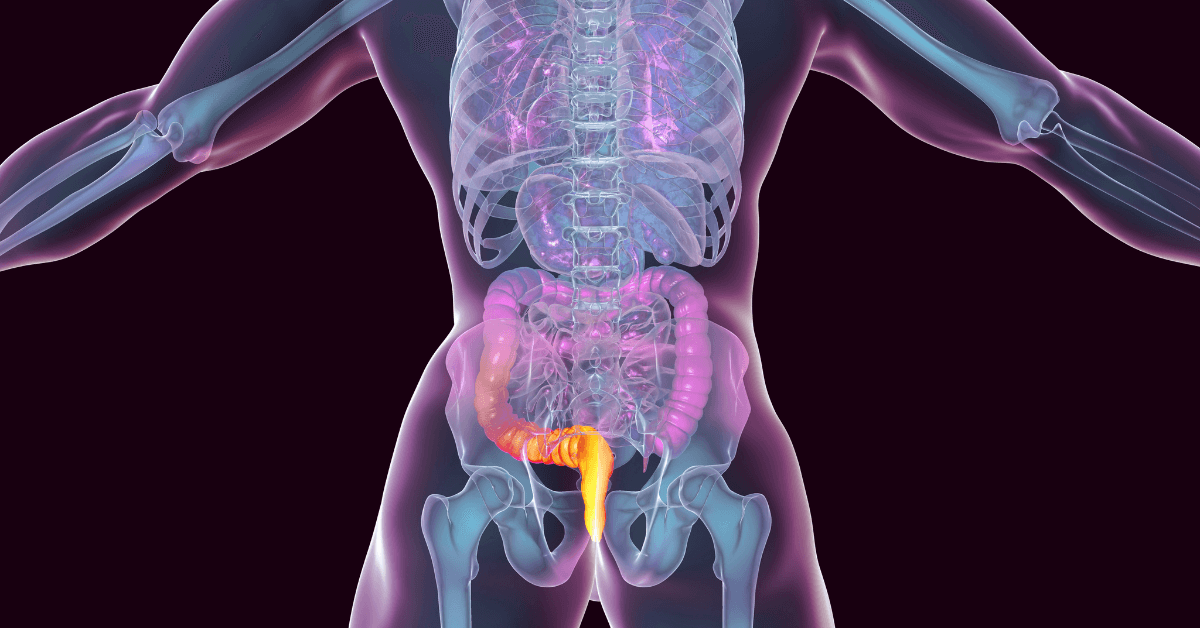Pilonidal cysts are a common condition, often misunderstood and frequently mistaken for other types of cysts or infections. While they usually form in the skin near the tailbone, they can lead to painful symptoms that disrupt daily life. Early identification and proper management of pilonidal cyst symptoms are crucial in preventing the condition from becoming a recurring problem or causing long-term complications.
In this blog, we will walk you through the common symptoms of pilonidal cysts, how to identify them early, and the best ways to address and manage the condition. By understanding the signs and symptoms, you can take proactive steps to reduce discomfort and avoid further health issues.
What is a Pilonidal Cyst?
A pilonidal cyst is a small, fluid-filled sac or pocket that forms in the skin near the tailbone (sacrum). It is usually caused by hair that grows into the skin, though other factors like friction, prolonged sitting, and poor hygiene can contribute to their development. The cyst can remain asymptomatic for a long time or cause mild discomfort. However, when the cyst becomes infected, it can lead to more significant symptoms such as swelling, pain, and the formation of an abscess.
Pilonidal cysts are more common in young adults, particularly men, and are often associated with sedentary lifestyles or long hours of sitting. These cysts can also recur over time, leading to chronic issues if not properly managed.

Common Symptoms of Pilonidal Cysts
1. Pain or Tenderness Near the Tailbone
One of the first signs of a pilonidal cyst is pain or tenderness in the area near the tailbone. This pain can be mild to severe and often worsens with activities such as sitting for prolonged periods, bending over, or walking.
Pain is usually the most noticeable symptom and can be a warning sign that the cyst is becoming inflamed or infected. The discomfort may feel like a dull ache, but in some cases, it can be sharp and throbbing.
How to manage it:
If you experience mild pain, try sitting on soft cushions and avoid prolonged periods of sitting. Applying warm compresses can also provide temporary relief by reducing swelling and discomfort.
2. Swelling and Redness
As the pilonidal cyst becomes irritated or infected, swelling and redness may develop around the tailbone area. The skin may become visibly inflamed, and you may notice a small lump or bump under the skin. This swelling can be tender to the touch and can increase in size if the cyst continues to grow.
How to manage symptoms:
To reduce swelling, use warm compresses to soothe the affected area. If the swelling persists or worsens, it’s important to seek medical advice for further evaluation.
3. Drainage of Pus
A more severe symptom of an infected pilonidal cyst is the drainage of pus. This occurs when the cyst becomes infected and forms an abscess (a pocket of pus). The pus may be yellow or green in color and can have a foul odor. Drainage can provide some relief from the pressure caused by the cyst but may signal the need for medical treatment to prevent the infection from spreading.
How to manage it:
If the cyst is draining, keep the area clean and dry to prevent further infection. You may need to visit a doctor to have the pus drained properly and receive antibiotics to clear the infection.
4. Formation of a Fistula or Sinus Tract
A fistula or sinus tract can develop in chronic cases of pilonidal cysts. This occurs when a tunnel forms under the skin, connecting the cyst to the surface of the skin. The formation of a fistula can make the cyst more difficult to treat, as it allows for continued drainage and recurrence of symptoms.
How to manage symptoms:
If a fistula or sinus tract develops, it may require surgical intervention to remove the cyst and repair the damaged tissue. Surgery may involve excision of the cyst, followed by closure of the wound to prevent further complications.
5. Fever and Chills
In more severe cases, fever and chills can occur as a result of an infection. This is a sign that the pilonidal cyst has caused a systemic infection and requires immediate medical attention. A fever may be accompanied by fatigue, body aches, and an overall feeling of being unwell.
How to manage it:
If you develop a fever or chills along with other symptoms of a pilonidal cyst, consult a doctor right away. Antibiotics or drainage may be necessary to prevent the infection from worsening.
How to Identify Pilonidal Cyst Symptoms Early
Recognizing the symptoms of pilonidal cysts early can help you manage the condition before it becomes more severe. Here are a few signs that you should look out for:
- A small, painful lump near the tailbone
- Redness or swelling in the area around the tailbone
- A feeling of discomfort or tenderness when sitting
- Drainage of pus or other fluids from the cyst
- The development of a sinus tract or fistula
- Fever or other signs of infection
If you experience any of these symptoms, it’s important to seek medical attention to determine whether the symptoms are related to a pilonidal cyst and to prevent further complications.
How to Address Pilonidal Cyst Symptoms
While pilonidal cysts often require medical intervention, there are a few steps you can take to address the symptoms and reduce discomfort at home.
1. Warm Compresses
Applying a warm compress to the affected area can help reduce swelling, promote drainage, and alleviate pain. This can be particularly helpful if the cyst is in the early stages or if it’s draining.
To use a warm compress:
- Soak a clean cloth in warm water and apply it to the affected area for 15 to 20 minutes.
- Repeat this process several times a day for best results.
2. Keep the Area Clean and Dry
Maintaining proper hygiene is essential to prevent infection and reduce inflammation. After each use of the bathroom, gently wash the affected area with mild soap and water, and pat it dry with a clean towel. Avoid using harsh soaps or scrubbing the area too vigorously, as this can cause further irritation.
3. Avoid Prolonged Sitting
If possible, try to avoid sitting for long periods, as pressure on the tailbone area can worsen the symptoms of a pilonidal cyst. If you must sit for extended periods, use a cushion or pillow to alleviate pressure and reduce discomfort.
4. Pain Management for Pilonidal Cysts
Over-the-counter pain relievers, such as ibuprofen or acetaminophen, can help manage pain and reduce inflammation caused by the cyst. Always follow the recommended dosage and consult a healthcare provider if you have any concerns about medication use.
Treatment Options for Pilonidal Cysts
While many pilonidal cysts can be managed with conservative treatments, some cases may require medical intervention. Treatment options for pilonidal cysts include:
1. Incision and Drainage
If the cyst becomes infected and forms an abscess, your doctor may recommend incision and drainage. During this procedure, the doctor makes a small incision in the cyst to allow the pus to drain out. This can provide relief from pain and pressure, but it may not completely resolve the cyst.
2. Surgical Excision
For larger or recurrent pilonidal cysts, surgical excision may be necessary. This involves removing the cyst and the surrounding tissue. In some cases, the wound is left open to heal naturally, while in others, the wound may be closed with stitches.
3. Laser Treatment
Some healthcare providers may offer laser treatment to remove the pilonidal cyst. One such option is SiLac (Sinus Laser-Assisted Closure), a minimally invasive procedure that uses a laser to target and close the sinus tract, effectively treating the cyst while promoting faster healing with less pain. This method is less invasive than traditional surgery and can be particularly effective in treating recurrent or complex pilonidal cysts.
At IBI Healthcare, we offer the SiLac procedure as part of our advanced treatment options, providing a quicker recovery time and reduced risk of recurrence compared to conventional methods.
Preventing Pilonidal Cysts
While pilonidal cysts can’t always be prevented, there are some steps you can take to reduce your risk:
- Maintain good hygiene: Keep the area near your tailbone clean and dry to reduce the risk of hair or debris entering the skin.
- Avoid prolonged sitting: Take breaks from sitting for long periods to relieve pressure on the tailbone.
- Shave the area: If you’re prone to pilonidal cysts, shaving the area around your tailbone may help reduce friction and prevent hair from becoming embedded in the skin.
- Exercise regularly: Regular physical activity can improve circulation and reduce the risk of developing pilonidal cysts.
Conclusion
Understanding the symptoms of pilonidal cysts and addressing them early is crucial for managing the condition and preventing long-term complications. While mild cases may resolve with home treatments, more severe or recurrent cases may require medical intervention. By recognizing the symptoms and taking steps to manage and treat the condition, you can reduce discomfort and improve your quality of life.
If you suspect you have a pilonidal cyst or are experiencing any of the symptoms mentioned in this blog, it’s important to consult with a healthcare provider to determine the best course of treatment. With the right care and attention, pilonidal cysts can be managed effectively, allowing you to maintain good health and comfort.




